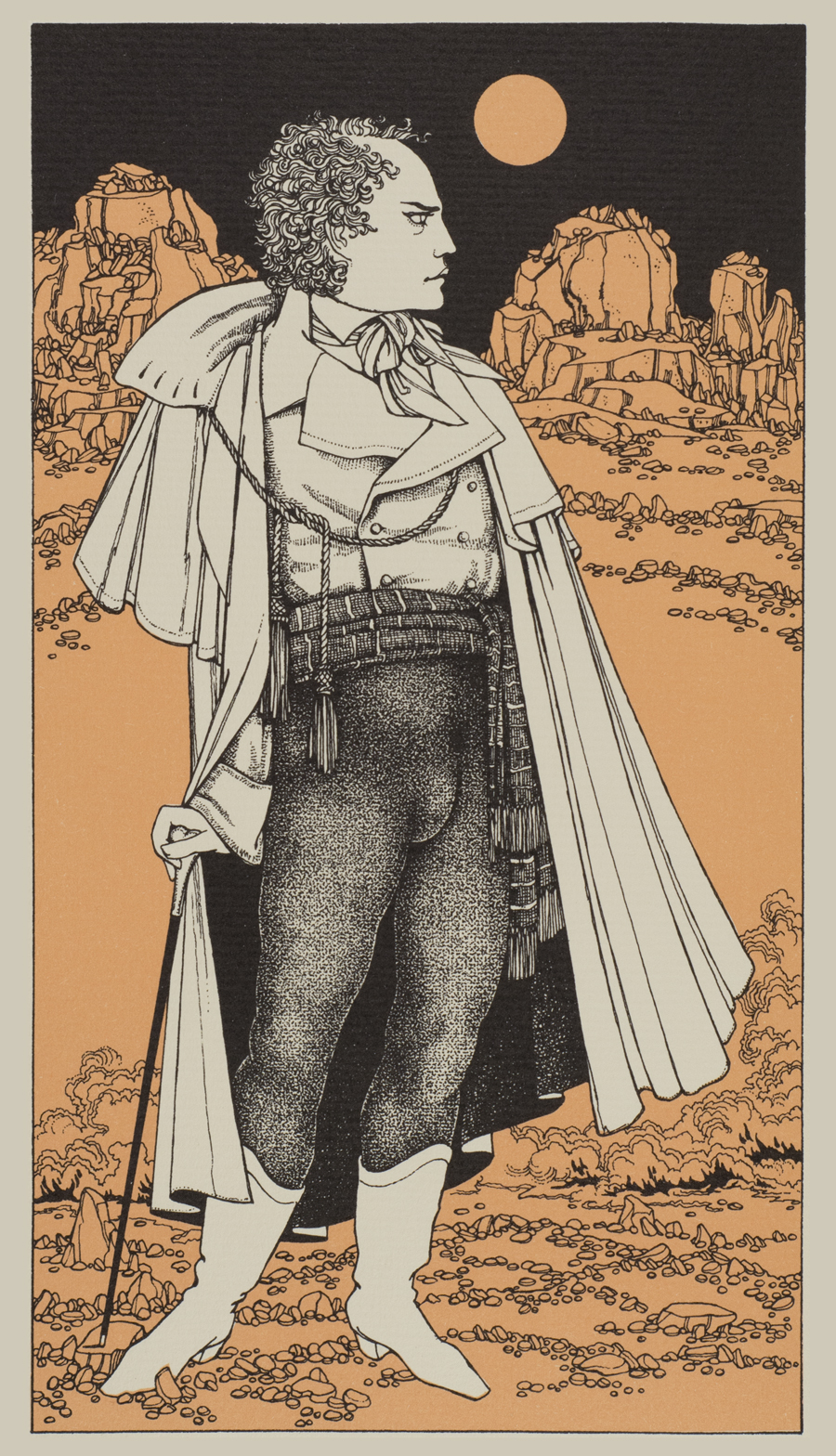Medievalism
The themes underlying Virgil Burnett’s illustrations look to revive the eternal themes of medieval texts. They link us to the larger timeline of humanity as Burnett reaches into the past to recover perennial motifs that outweigh the quotidian anxieties of the modern world. The four major themes pictured here are medievalism, eroticism, the artist as prophet, and the moral and physical decay of civilization. Burnett uses medieval themes to return us to the root of our humanity, namely our emotional and creative impulses and fantasies.
The subjects of many of Virgil Burnett’s illustrations and the types of texts he illustrates have a medieval or antiquarian feel. His representations of medieval subjects and heroic imagery connect us to the medieval past in an attempt to understand how our contemporary values as a civilization relate to the ideals and symbols of history. Burnett’s work both represents the medieval era and criticizes its use as a historical symbol.
One of Burnett's more straightforward illustrations, his frontispiece lithograph for the Folio Society edition of Beowulf constructs through its symbols and style the portrait of a medieval hero. Beowulf stands stoically in the foreground of the frame; he holds an unsheathed sword and gazes out from decorative armor. The figure wears medieval garb, and his facial features are obscured, constructing him as an emblem of a medieval hero.
In his illustrations to The Damnation of Byron, Burnett again evokes the medieval hero, but does so through a transformative and perhaps semi-ironic reimagining of that hero as the dandified 19th-century poet Lord Byron. Burnett's frontispiece to the text echoes, in the figure's stance and composition of the frame, the Beowulf illustration, suggesting, perhaps, Romanticism's debt to the Gothic, but also caricaturing the modern monumentality of medieval lore. In fact, the image utilizes symbols from a variety of eras, collapsing the distance among various English literary periods. The figure in the Byron frontispiece holds his cane in the same way as Burnett’s Beowulf brandishes his sword. The cane and Byron’s dandy-like costume speak to the material culture of 19th-century Europe, yet Burnett combines these historical images in a composition that fuses medieval heroism with landscapes of Renaissance portraiture. This piece takes the framework of a medieval portrait such as Beowulf and infuses historical imagery in order to call our attention to our inextricable links to the past, despite modern attempts to maintain a distance from it.
Burnett’s oeuvre of illustration combines allusions to layers of historical movements in art. Medieval Revivalism as a 19th-century ideology refers to the resuscitation of the Gothic past in response to the growing rationalism and commercialism of the industrial era. At its core, this ideology is about a sense of nostalgia and search for answers or understanding in the simplicity of the past. Burnett’s drawings evoke that desire to return to the ethos of a medieval imagination while simultaneously seeking to establish continuity with the past.

